Cover Page
Half-title Page
Title Page
Copyright Page
Dedication Page
Contents
PREFACE
Themes of a Discrete Mathematics Course
Special Features of This Book
Highlights of the Fourth Edition
Companion Website
Student Solutions Manual and Study Guide
Organization
Acknowledgments
Chapter 1:
Speaking Mathematically
1.1:
Variables
1.2:
The Language of Sets
1.3:
The Language of Relations and Functions
Chapter 2:
The Logic of Compound Statements
2.1:
Logical Form and Logical Equivalence
2.2: Conditional Statements
2.3:
Valid and Invalid Arguments
2.4:
Application: Digital Logic Circuits
2.5:
Application: Number Systems and Circuits for Addition
Chapter 3:
The Logic of Quantified Statements
3.1:
Predicates and Quantified Statements I
3.2:
Predicates and Quantified Statements II
3.3:
Statements with Multiple Quantifiers
3.4:
Arguments with Quantified Statements
Chapter 4: Elementary Number Theory
and Methods of Proof
4.1: Direct Proof and Counterexample I: Introduction
4.2:
Direct Proof and Counterexample II: Rational Numbers
4.3:
Direct Proof and Counterexample III: Divisibility
4.4: Direct Proof and Counterexample IV: Division into Cases and the Quotient-Remainder Theorem
4.5:
Direct Proof and Counterexample V: Floor and Ceiling
4.6:
Indirect Argument: Contradiction and Contraposition
4.7:
Indirect Argument: Two Classical Theorems
4.8:
Application: Algorithms
Chapter 5: Sequences, Mathematical Induction,
and Recursion
5.1:
Sequences
5.2:
Mathematical Induction I
5.3:
Mathematical Induction II
5.4: Strong Mathematical Induction and the Well-Ordering Principle for the Integers
5.5:
Application: Correctness of Algorithms
5.6:
Defining Sequences Recursively
5.7:
Solving Recurrence Relations by Iteration
5.8: Second-Order Linear Homogenous Recurrence Relations with Constant Coefficients
5.9:
General Recursive Definitions and Structural Induction
Chapter 6:
Set Theory
6.1:
Set Theory: Definitions and the Element Method of Proof
6.2:
Properties of Sets
6.3:
Disproofs, Algebraic Proofs, and Boolean Algebras
6.4:
Boolean Algebras, Russell’s Paradox, and the Halting Problem
Chapter 7:
Functions
7.1:
Functions Defined on General Sets
7.2:
One-to-One and Onto, Inverse Functions
7.3:
Composition of Functions
7.4:
Cardinality with Applications to Computability
Chapter 8:
Relations
8.1:
Relations on Sets
8.2:
Reflexivity, Symmetry, and Transitivity
8.3:
Equivalence Relations
8.4:
Modular Arithmetic with Applications to Cryptography
8.5:
Partial Order Relations
Chapter 9:
Counting and Probability
9.1:
Introduction
9.2:
Possibility Trees and the Multiplication Rule
9.3:
Counting Elements of Disjoint Sets: The Addition Rule
9.4:
The Pigeonhole Principle
9.5:
Counting Subsets of a Set: Combinations
9.6:
r-Combinations with Repetition Allowed
9.7:
Pascal’s Formula and the Binomial Theorem
9.8:
Probability Axioms and Expected Value
9.9:
Conditional Probability, Bayes’ Formula, and Independent Events
Chapter 10:
Graphs and Trees
10.1:
Graphs: Definitions and Basic Properties
10.2:
Trails, Paths, and Circuits
10.3:
Matrix Representations of Graphs
10.4:
Isomorphisms of Graphs
10.5:
Trees
10.6:
Rooted Trees
10.7:
Spanning Trees and Shortest Paths
Chapter 11:
Analysis of Algorithm Efficiency
11.1:
Real-Valued Functions of a Real Variable and Their Graphs
11.2: O-, Ω-, and Θ-Notations
11.3:
Application: Analysis of Algorithm Efficiency I
11.4:
Exponential and Logarithmic Functions:Graphs and Order
11.5:
Application: Analysis of Algorithm Efficiency II
Chapter 12:
Regular Expressions and Finite-State Automata
12.1:
Formal Languages and Regular Expressions
12.2:
Finite-State Automata
12.3:
Simplifying Finite-State Automata
Appendix A:
Properties of the Real Numbers
Appendix B:
Solutions and Hints to Selected Exercises
Index
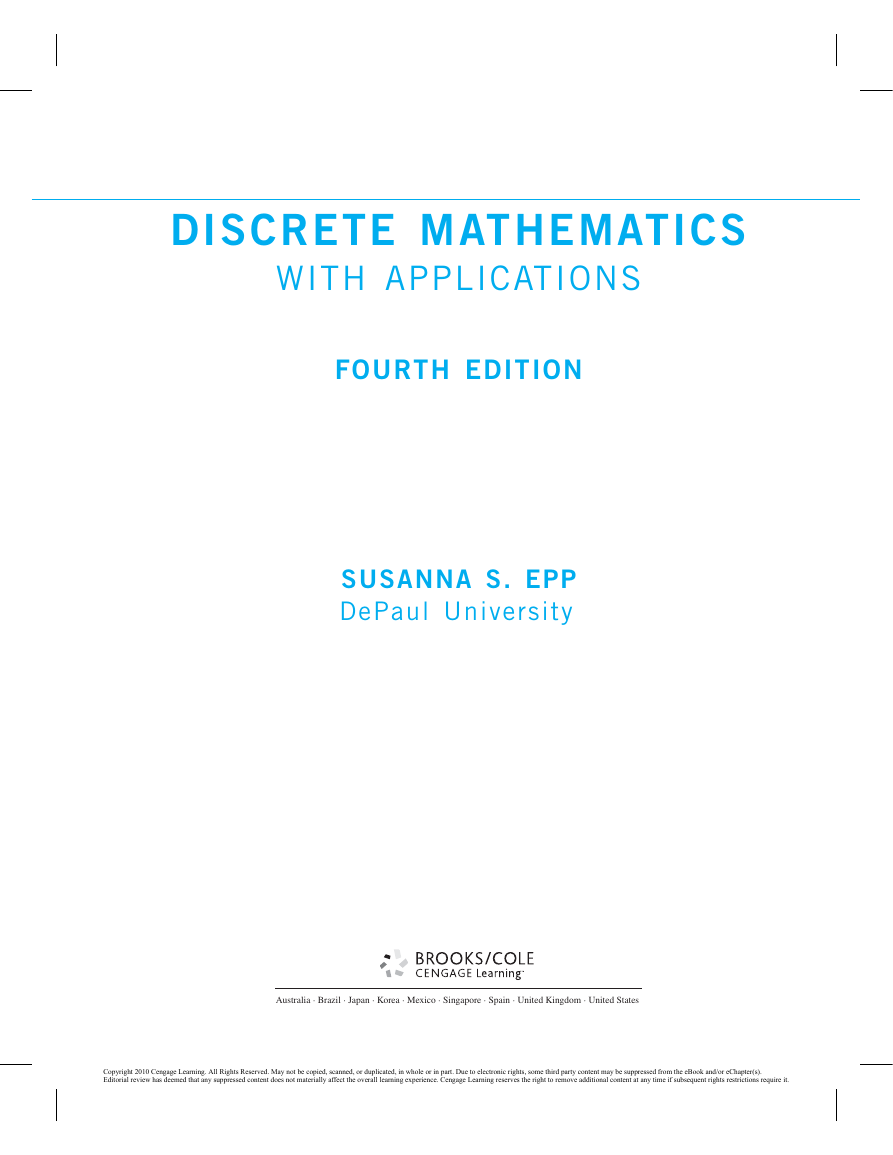
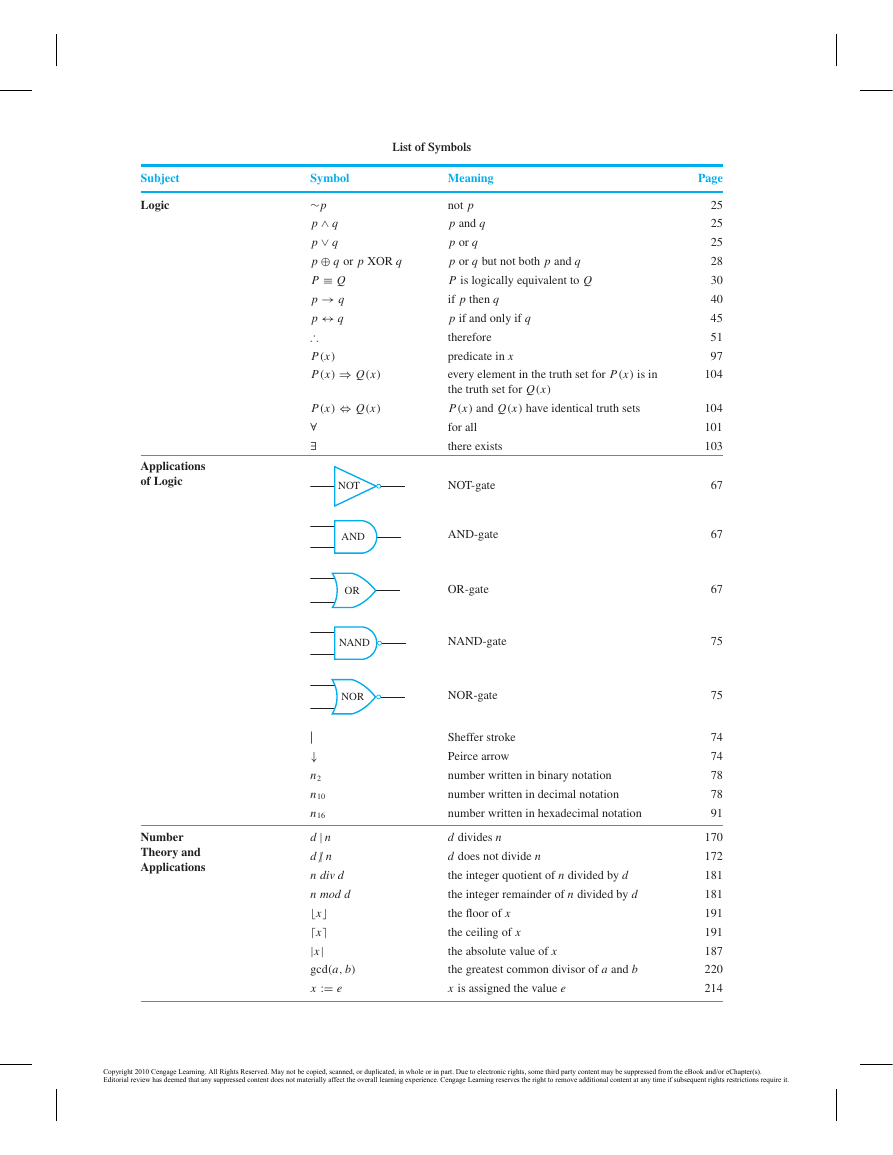
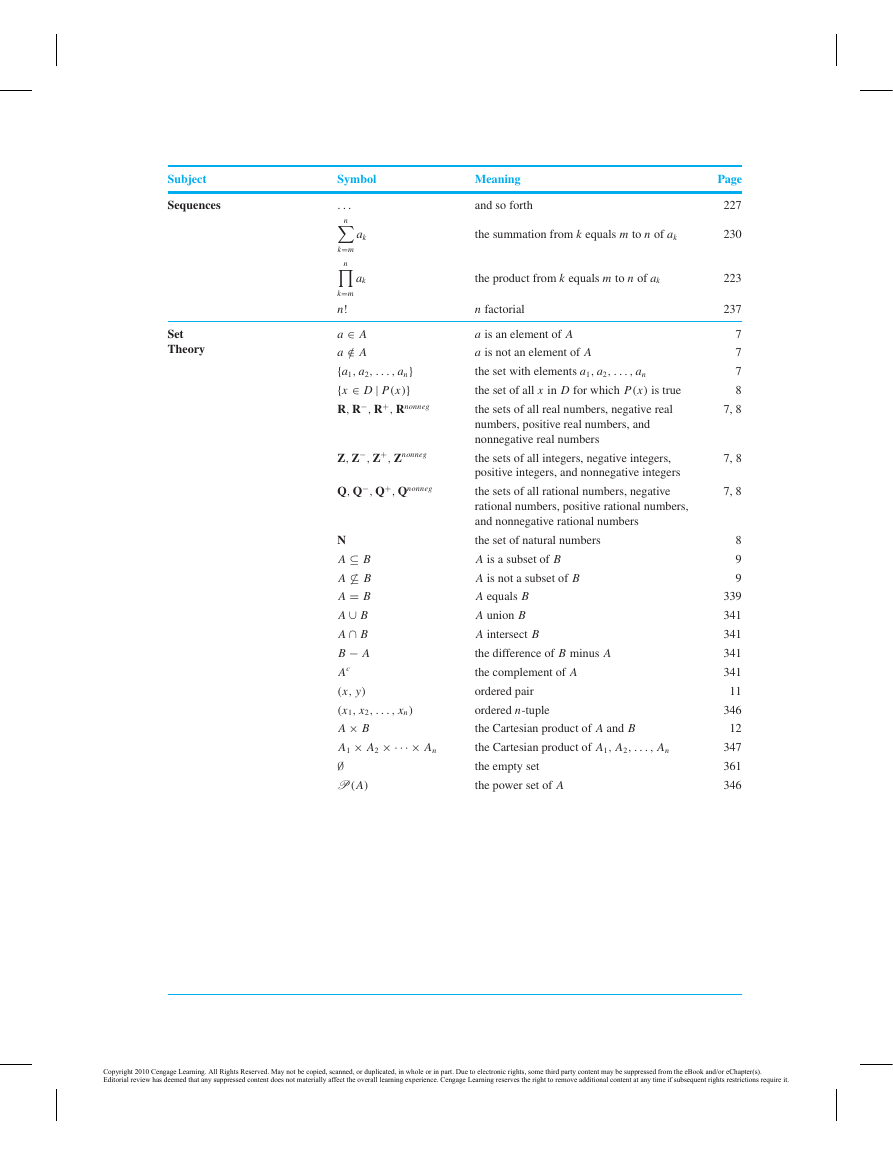
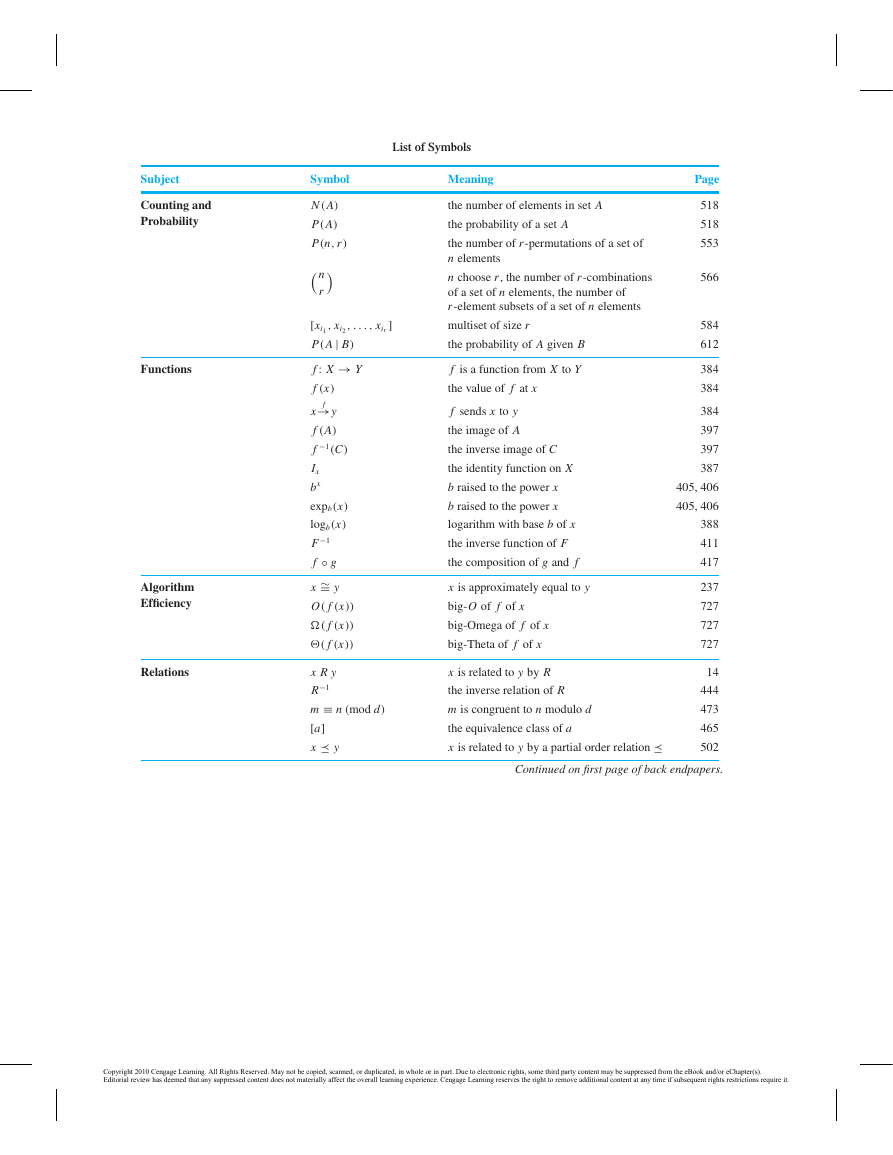
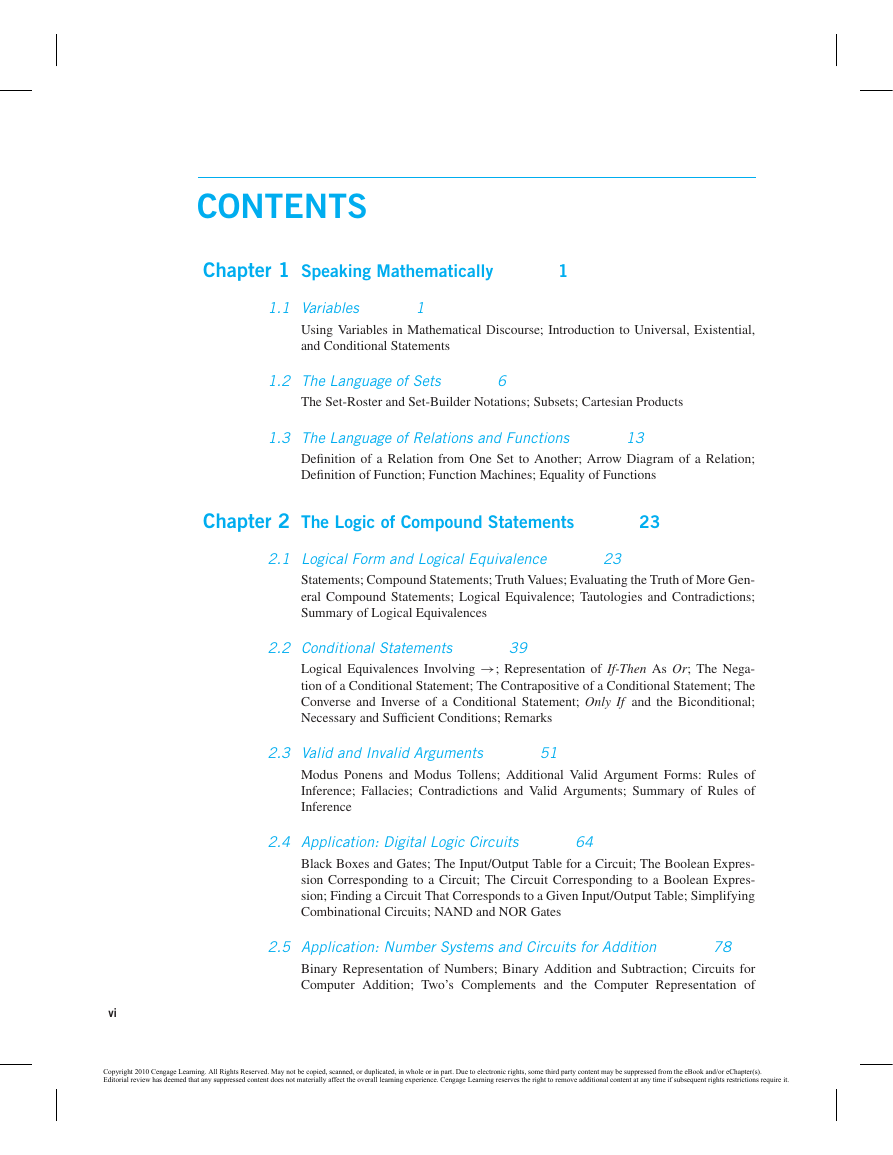
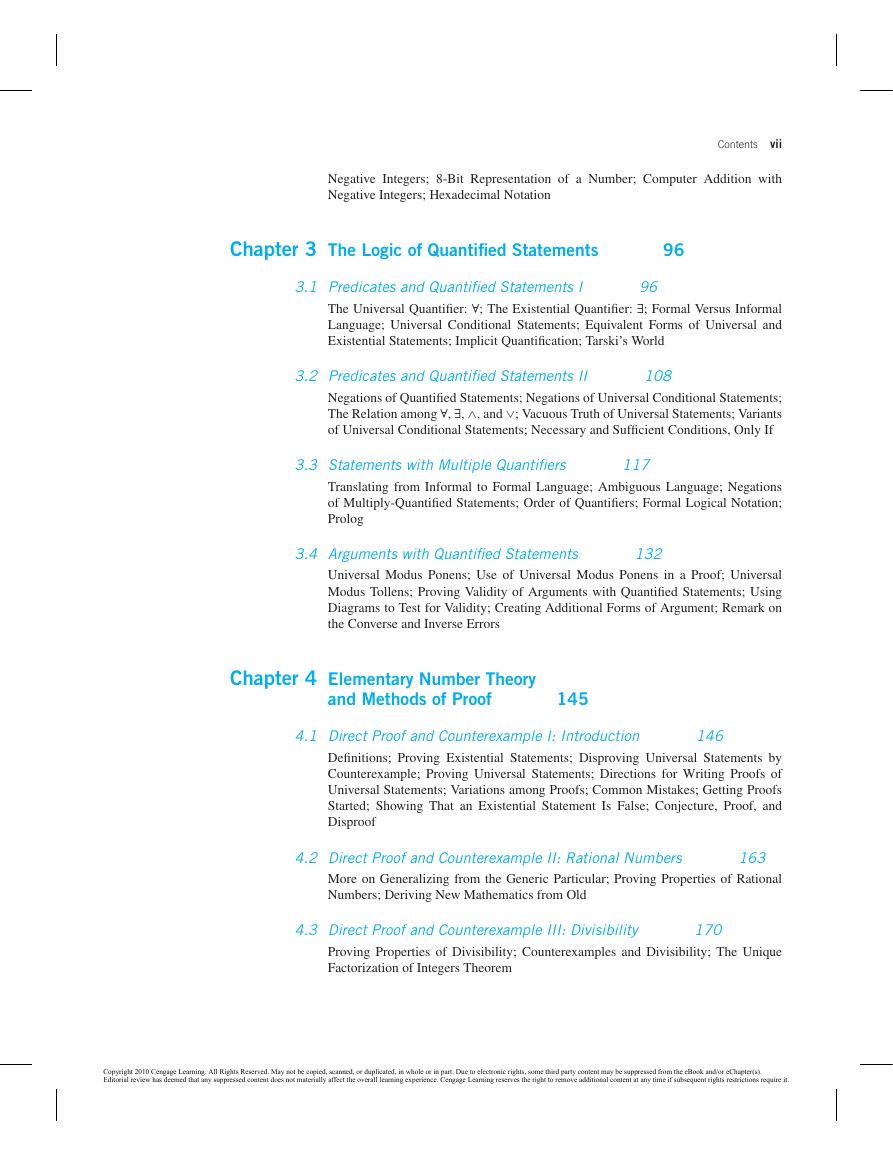
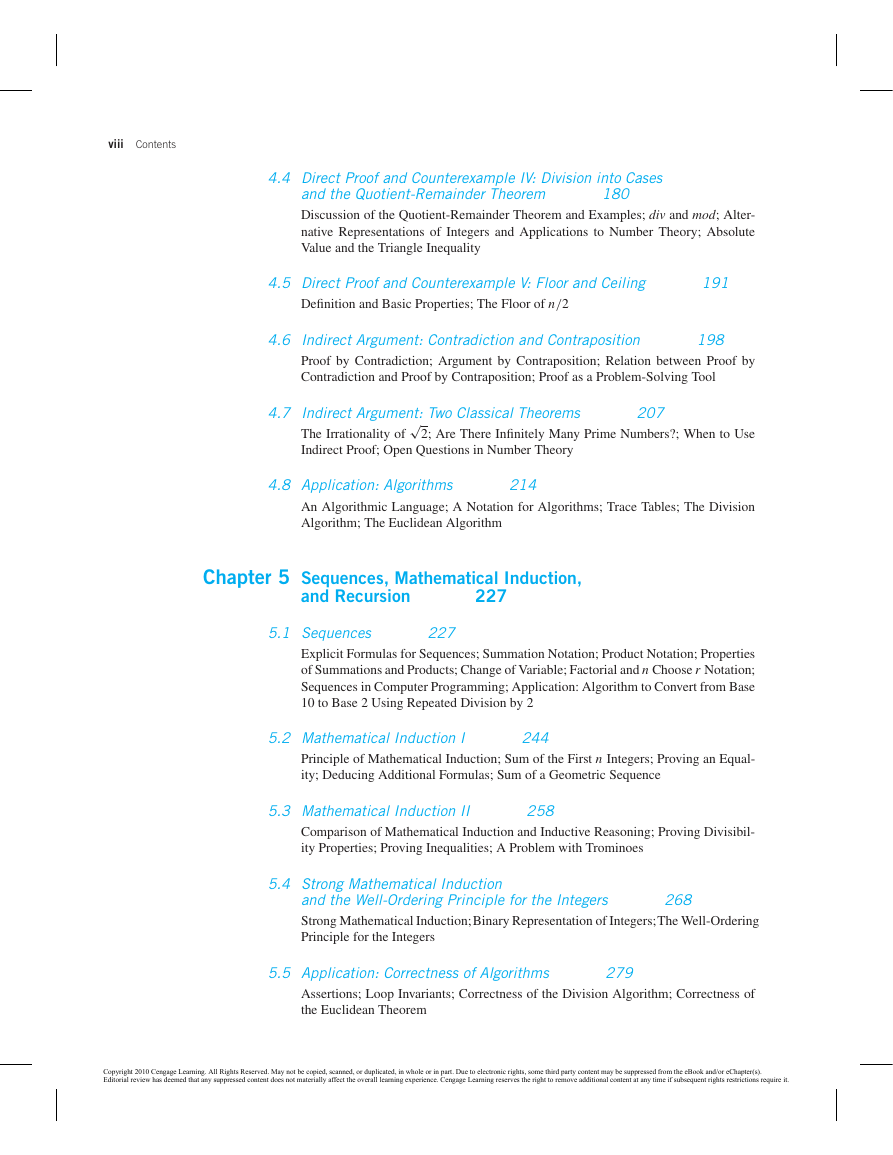









 2023年江西萍乡中考道德与法治真题及答案.doc
2023年江西萍乡中考道德与法治真题及答案.doc 2012年重庆南川中考生物真题及答案.doc
2012年重庆南川中考生物真题及答案.doc 2013年江西师范大学地理学综合及文艺理论基础考研真题.doc
2013年江西师范大学地理学综合及文艺理论基础考研真题.doc 2020年四川甘孜小升初语文真题及答案I卷.doc
2020年四川甘孜小升初语文真题及答案I卷.doc 2020年注册岩土工程师专业基础考试真题及答案.doc
2020年注册岩土工程师专业基础考试真题及答案.doc 2023-2024学年福建省厦门市九年级上学期数学月考试题及答案.doc
2023-2024学年福建省厦门市九年级上学期数学月考试题及答案.doc 2021-2022学年辽宁省沈阳市大东区九年级上学期语文期末试题及答案.doc
2021-2022学年辽宁省沈阳市大东区九年级上学期语文期末试题及答案.doc 2022-2023学年北京东城区初三第一学期物理期末试卷及答案.doc
2022-2023学年北京东城区初三第一学期物理期末试卷及答案.doc 2018上半年江西教师资格初中地理学科知识与教学能力真题及答案.doc
2018上半年江西教师资格初中地理学科知识与教学能力真题及答案.doc 2012年河北国家公务员申论考试真题及答案-省级.doc
2012年河北国家公务员申论考试真题及答案-省级.doc 2020-2021学年江苏省扬州市江都区邵樊片九年级上学期数学第一次质量检测试题及答案.doc
2020-2021学年江苏省扬州市江都区邵樊片九年级上学期数学第一次质量检测试题及答案.doc 2022下半年黑龙江教师资格证中学综合素质真题及答案.doc
2022下半年黑龙江教师资格证中学综合素质真题及答案.doc